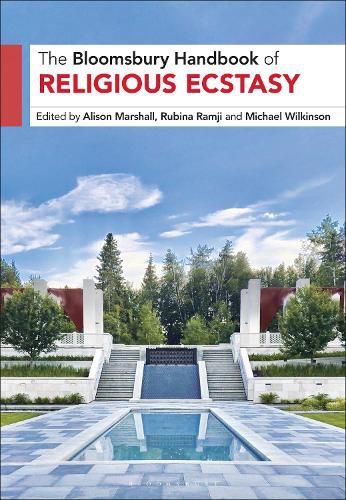Readings Newsletter
Become a Readings Member to make your shopping experience even easier.
Sign in or sign up for free!
You’re not far away from qualifying for FREE standard shipping within Australia
You’ve qualified for FREE standard shipping within Australia
The cart is loading…






Why do people seek a connection to something beyond the social dimensions of the world? Ecstatic experiences are often labelled religious, spiritual, mystical or even sacred. However, ecstasy is not just extraordinary; for many people throughout the world it is an ordinary part of daily life.
The Handbook highlights the diverse individuals who have experienced ecstasy in the past and present from ordinary people to mystics, pastors, healers, spirit mediums and urban/neo/therapeutic shamans. Chapters show that ecstasy may be experienced during trance, possession, prayer, and even through the use of drugs, such as soma, peyote, ayahuasca, ibogaine, mushrooms, LSD, and other substances.
While institutional expressions of religion may be on the decline, experiences of religious ecstasy and interactions among living people and gods, saints, angels, and demons individually and collectively, are happening everywhere - occurring at home, online, in the community, and through prayer, dance, song, possession, and the ingestion of drugs. Ecstatic religious experience, as this handbook shows, provides meaning, belonging, and, for some, profit in the late capitalist marketplace.
$9.00 standard shipping within Australia
FREE standard shipping within Australia for orders over $100.00
Express & International shipping calculated at checkout
Why do people seek a connection to something beyond the social dimensions of the world? Ecstatic experiences are often labelled religious, spiritual, mystical or even sacred. However, ecstasy is not just extraordinary; for many people throughout the world it is an ordinary part of daily life.
The Handbook highlights the diverse individuals who have experienced ecstasy in the past and present from ordinary people to mystics, pastors, healers, spirit mediums and urban/neo/therapeutic shamans. Chapters show that ecstasy may be experienced during trance, possession, prayer, and even through the use of drugs, such as soma, peyote, ayahuasca, ibogaine, mushrooms, LSD, and other substances.
While institutional expressions of religion may be on the decline, experiences of religious ecstasy and interactions among living people and gods, saints, angels, and demons individually and collectively, are happening everywhere - occurring at home, online, in the community, and through prayer, dance, song, possession, and the ingestion of drugs. Ecstatic religious experience, as this handbook shows, provides meaning, belonging, and, for some, profit in the late capitalist marketplace.